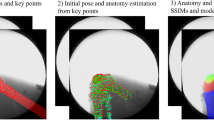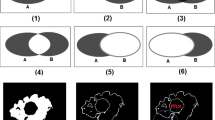Abstract
Quantization of 3D meshes involves representing the vertices of the mesh using a reduced number of bits, typically 10, 12, or 14 bits. This technique is particularly relevant for densely distributed 3D models, such as those representing human organs, which often require higher-precision floats with 32 or 64 bits. The increasing prevalence of IoT devices with limited computing resources has sparked interest in studying the conversion of dense 3D meshes into low-precision formats. However, surface smoothing is a significant challenge in medically acquired 3D meshes to eliminate the undesirable noise. It is observed that 10-bit quantization severely impacts the performance of state-of-the-art smoothing algorithms including Scale dependent umbrella (SDU), Mean curvature flow (MCF), Bi-normal filtering (BiNF), Bilateral filtering (BNF), L0 optimization, and Deep normal filtering network (DNF-Net). Some of these methods even do not complete their first round of iteration. A novel approach has been developed to address the surface smoothing challenges in 3D meshes with truncated vertex coordinates. The approach combines a central probability measure with Bayesian Averaging (BAM) and offers two versions for different scenarios. The first version, suitable for medical organs, utilizes a non-iterative process and reference models to achieve effective surface smoothing. By leveraging the central probability measure and BAM, it enhances the quality of medical organ meshes. The second version, more versatile for general-purpose meshes without reference models, employs an iterative process. It outperforms the existing methods by leveraging the central probability measure and BAM, particularly for meshes with dense point distributions.























Similar content being viewed by others
Availability of data and materials
All datasets are freely available in public repositories. Data can be made available by corresponding author on reasonable requests. Some are available at [16]
References
Hoppe, H., Praun, E.: Shape compression using spherical geometry images. In: Advances in Multiresolution for Geometric Modelling, Springer, Berlin (2005)
Desbrun, M., Meyer, M., Schröder, P., Barr, A. H.: Implicit fairing of irregular meshes using diffusion and curvature flow. In: Proceedings of the 26th annual conference on Computer graphics and interactive techniques (1999)
Yagou, H., Ohtake, Y., Belyaev, A.: Mesh smoothing via mean and median filtering applied to face normal. In: Geometric modeling and processing. Theory and applications. Gmp 2002. Proceedings, (2002)
Zhao, H., Xu, G.: Triangular surface mesh fairing via Gaussian curvature flow. J. Comput. Appl. Math. 195, 300–311 (2006)
Zheng, Y., Fu, H., Au, O.K.-C., Tai, C.-L.: Bilateral normal filtering for mesh denoising. IEEE Trans. Visual Comput. Graphics 17, 1521–1530 (2010)
Wang, W., Duan, L.: Bi-normal mesh smoothing based on vertex feature. IEEE Access 8, 171469–171478 (2020)
Wei, M., Yu, J., Pang, W.-M., Wang, J., Qin, J., Liu, L., Heng, P.-A.: Bi-normal filtering for mesh denoising. IEEE Trans. Visual Comput. Graphics 21, 43–55 (2014)
Wang, P.-S., Liu, Y., Tong, X.: Mesh denoising via cascaded normal regression. ACM Trans. Graph. 35, 232–241 (2016)
Li, X., Li, R., Zhu, L., Fu, C.-W., Heng, P.-A.: DNF-Net: a deep normal filtering network for mesh denoising. IEEE Trans. Visual Comput. Graphics 27, 4060–4072 (2020)
Xing, Y., Tan, J., Hong, P., He, Y., Hu, M.: Mesh denoising based on recurrent neural networks. Symmetry 14, 1233 (2022)
Wei, M., Wei, Z., Zhou, H., Hu, F., Si, H., Chen, Z., Zhu, Z., Qiu, J., Yan, X., Guo, Y. et al.: AGConv: adaptive graph convolution on 3D point clouds. IEEE Transactions on Pattern Analysis and Machine Intelligence (2023)
Raftery, A.E., Madigan, D., Hoeting, J.A.: Bayesian model averaging for linear regression models. J. Am. Stat. Assoc. 92, 179–191 (1997)
Džeroski, S., Cestnik, B., Petrovski, I.: Using the m-estimate in rule induction. J. Comput. Inf. Technol. 1, 37–46 (1993)
Sun, Y., Schaefer, S., Wang, W.: Denoising point sets via L0 minimization. Comput. Aided Geomet. Des. 35, 2–15 (2015)
Taubin, G.: A signal processing approach to fair surface design. In: Proceedings of the 22nd annual conference on Computer graphics and interactive techniques (1995)
Sarmah, M.: Github 17 May 2023. [Online]. Available: https://github.com/mrigankaresearch/Dataset_MGS_TF.git. Accessed 17 May 2023
Liu, H., Tai, X.-C., Glowinski, R.: An operator-splitting method for the gaussian curvature regularization model with applications to surface smoothing and imaging. SIAM J. Sci. Comput. 44, A935–A963 (2022)
Funding
Not applicable.
Author information
Authors and Affiliations
Contributions
MS contributed to conceptualization, methodology, result analysis, and writing—original draft preparation; AN was involved in validation, supervision, and writing-review and editing. All the authors have reviewed the results and approved the final version of the manuscript.
Corresponding author
Ethics declarations
Conflict of interest
The authors declare no competing interests.
Ethical approval
Not applicable.
Additional information
Publisher's Note
Springer Nature remains neutral with regard to jurisdictional claims in published maps and institutional affiliations.
Rights and permissions
Springer Nature or its licensor (e.g. a society or other partner) holds exclusive rights to this article under a publishing agreement with the author(s) or other rightsholder(s); author self-archiving of the accepted manuscript version of this article is solely governed by the terms of such publishing agreement and applicable law.
About this article
Cite this article
Sarmah, M., Neelima, A. Quantization and surface smoothing of 3D meshes with truncated vertex coordinates: a central probability measure and Bayesian averaging approach. SIViP 18, 17–25 (2024). https://doi.org/10.1007/s11760-023-02706-9
Received:
Revised:
Accepted:
Published:
Issue Date:
DOI: https://doi.org/10.1007/s11760-023-02706-9




